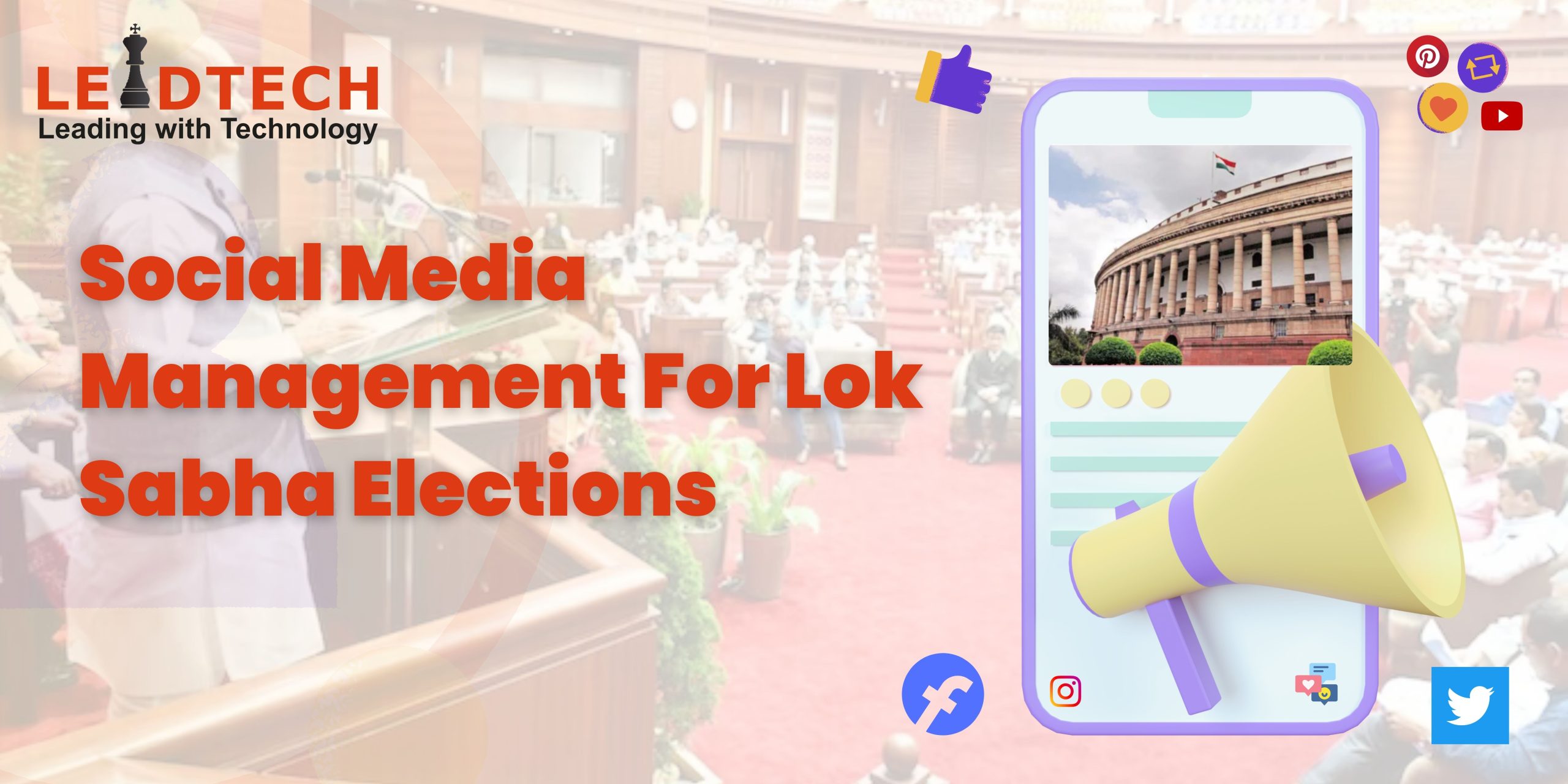
Party IT cell workers are discreetly sitting in war rooms, reaching out to millions through social media. At the same time, political leaders vie to mobilize the electorate through on-the-ground campaign activities, including massive rallies, party booths on the streets, and door-to-door canvassing.
During the 2019 Lok Sabha election, India, the world’s largest democracy, saw intense social media campaigning. Political parties in the US, UK, and Europe have taken advantage of every opportunity of the fast-paced growth of Internet Communication Technologies (ICTs) and social media in the present ‘fourth era of political communication’. Political parties in India began using social media management for Lok Sabha elections to connect with voters during the 2004 election. Still, with increased accessibility following the 2014 national election, they were able to do so more successfully.
Making The Best Of Social Media Management For Lok Sabha Elections
It is believed that the Bharatiya Janata Party (BJP) is a leader in strategically using social media and television for political communication. For example, when televisions became commonplace household goods, the BJP party allegedly used entertainment programs to mobilize the electorate through television culturally. Even though ICTs were labelled as elite and urban, the BJP was the first in India to use the Internet and social media during the 2014 national election.
However, research suggested that some of the BJP’s success—which included an absolute majority- was partly attributable to its more elite and urbanized internet marketing during the 2024 Lok Sabha election preparation, which will take place twenty years later. 2014 was an important year when social media management for the Lok Sabha Elections came in handy.
When combined with messaging apps like WhatsApp and social networking sites like Facebook, Instagram, Threads, and X, digital campaigning has shown to be a successful strategy for electorate mobilization and election victory. For example, the BJP declared in the lead-up to the 2014 election that roughly 160 of the 543 constituencies were appropriate for using a digital campaign strategy, and the BJP won these digital constituencies.
Thus, it was inevitable that other political parties would jump on the bandwagon and develop social media management for Lok Sabha elections and upcoming state elections.
Rise During the Pandemic
Social media also played a crucial role during the pandemic. Politicians relied heavily on social media platforms to communicate with their constituents and the general public. Even, the elections in several Indian States during 2021 and 2022 were held digitally.
Additionally, since the Indian Election Commission limited physical rallies, political parties were held back and resorted to social media for promotions. BJP, the ruling party had turned to digital media during the Uttar Pradesh, Uttrakhand, Himachal Pradesh and Gujarat Assembly elections. As per Amit Malaviya(BJP’s IT Cell Head), the Prime Minister addressed several virtual rallies that saw huge participation as well. These virtual rallies were also conducted during the assembly elections in Bihar and West Bengal. The social media team had reached out to the people through songs, slogans, cartoon videos and pictures on social media.
Speaking of the opposition parties, the INC, the Samajwadi Party, the BSP, and AAP, several virtual rallies were organized in UP during the assembly elections. All of these parties having recognized the importance of social media, ran multiple campaigns to woo voters.
Media and Political Campaigns
In India, campaign communication—the process by which political parties interact with the public during an election—is at the heart of political communication study. Research on Indian elections covers overall vote share, voter turnout, policy implications, demographics, economics, health, corruption, particular elections, campaign tactics, media coverage, and more. Research on political campaigns indicates that after the 2014 election, social media became a major focus of campaign tactics.
Traditionally, formal party activities such as rallies, speeches, policies, manifestos, door-to-door canvassing, party booths, posters, and billboards on the streets have all been a component of campaign communication. But these days, a leader or a party’s message on Facebook or Twitter also counts as formal political communication.
Political parties and leaders in India now have a much stronger online presence because of this shift; for instance, just before the house was dissolved, over 70% of MPs in the 16th Lok Sabha had a Twitter account. Research on political communication and technology advancements repeatedly demonstrates that political parties adjust to change.
Though they are created through a dynamic process, campaign plans may seem arbitrary because of political changes and things that happen in the lead-up to the election. Rather than a unified, nationwide policy, each party implements a customized, multi-level approach that considers local circumstances. When it comes to using technology for electoral campaigning, the BJP is the early adopter.
Consequently, due to Lok sabha election preparation, numerous political parties searched for campaign strategists and established their social media divisions. According to a BJP response, the JDS and INC hired a lot of social media strategists and campaigners who had previously worked for the BJP in the 2014 election.
Conclusion
The internet and social media can have a coupling effect, enhancing the current campaigning system and increasing the campaign message’s reachability among voters. But it is exceedingly implausible to argue that social media alone, as an autonomous system, can win elections in India. Year after year, growth in internet usage points to more social media management for Lok Sabha elections. Everybody consumes the information, but few genuinely challenge it. It is imperative to foster critical thinking skills and an attitude of inquiry, given the likelihood of increased efforts in the future to translate local to national campaign narratives.

